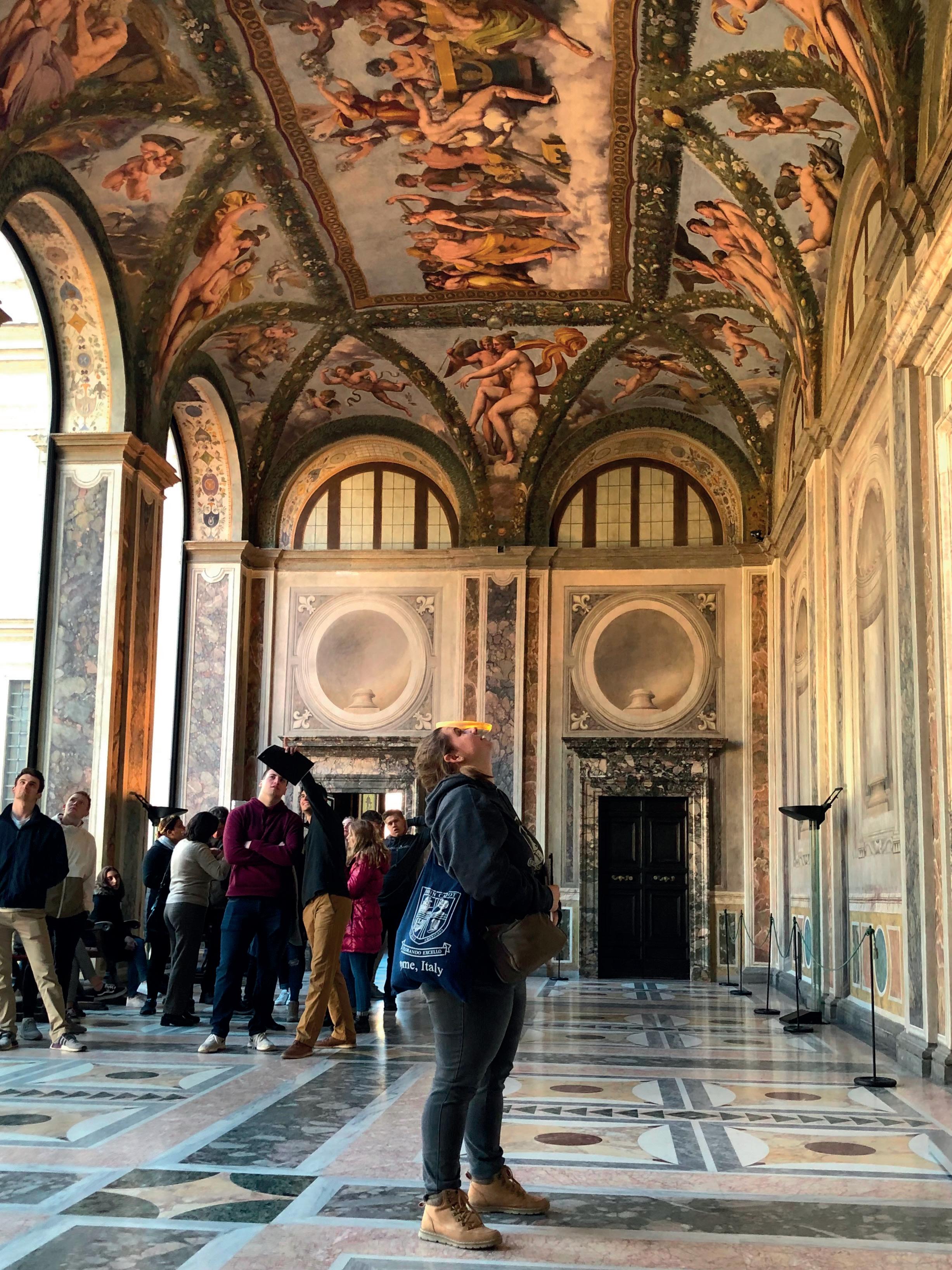

MASTER OF ARTS IN ART HISTORY

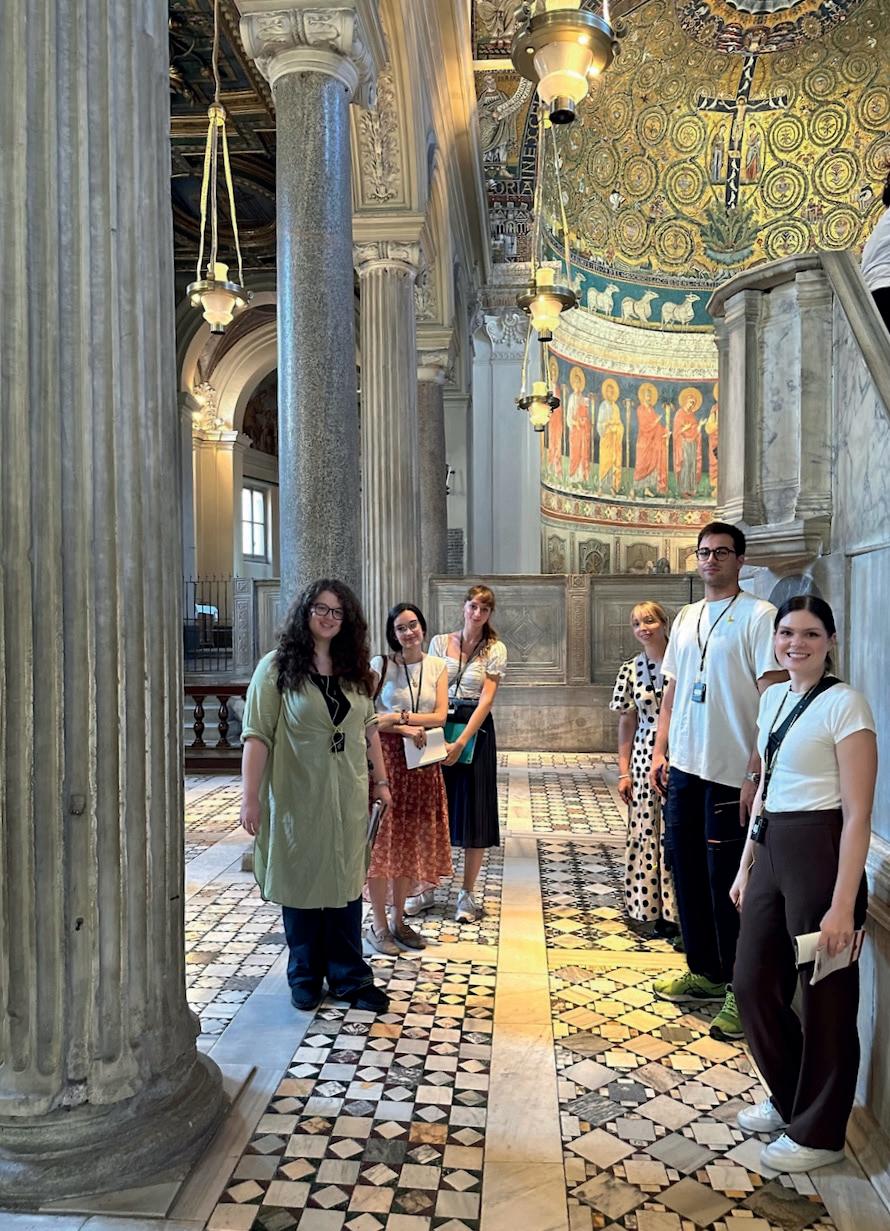
John Cabot University’s Master of Arts in Art History fosters professional mastery of the materials and methods of art history with emphasis on first-hand research in the museums, monuments, and archaeological sites of Rome. The degree can be completed in approximately fifteen months of full-time study (intensive format, with thesis and internship) or over the course of two academic years (biennial format, with thesis and two internships).
The program has a dual focus: the visual cultures of Rome and the Mediterranean, from antiquity to the present; and the acquisition of technical skills for primary research through direct study of art objects, edifices, archaeological sites, and archival documents. It also stimulates critical perspectives on the impact of Roman art worldwide.
John Cabot University is accredited by the Middle States Commission on Higher Education. The MA is the first graduate degree program in art history based entirely in Rome offered by a US-accredited university.
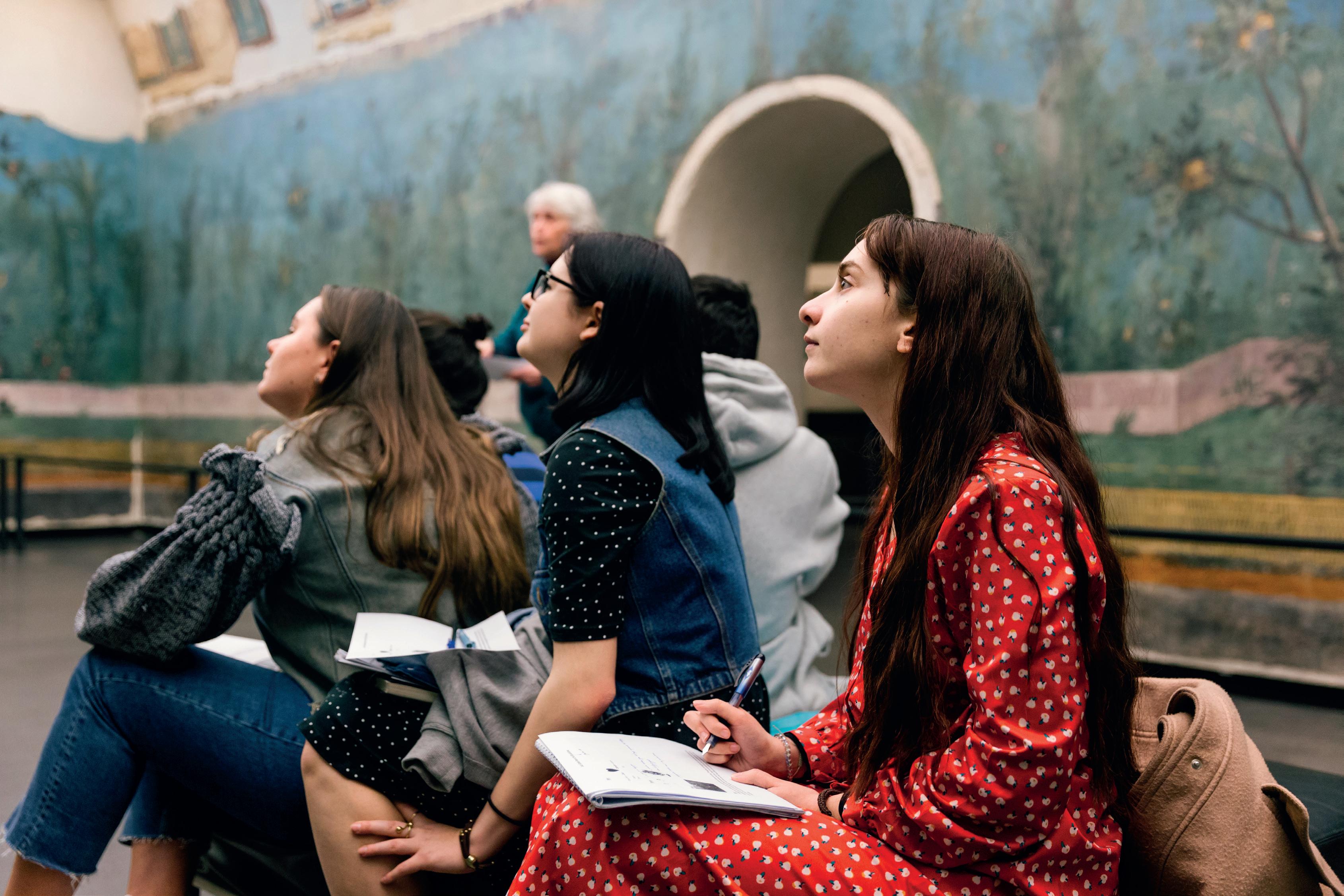
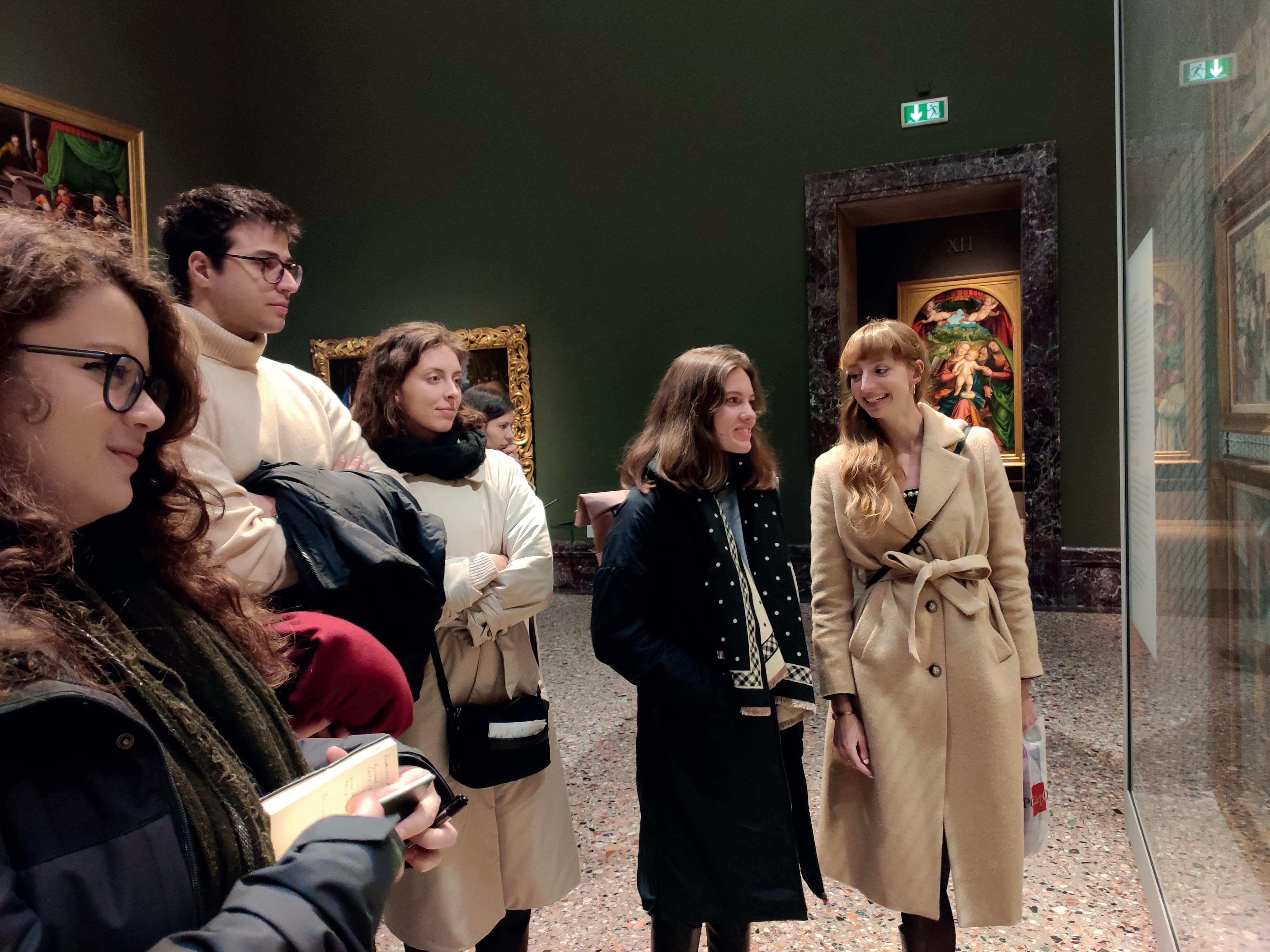
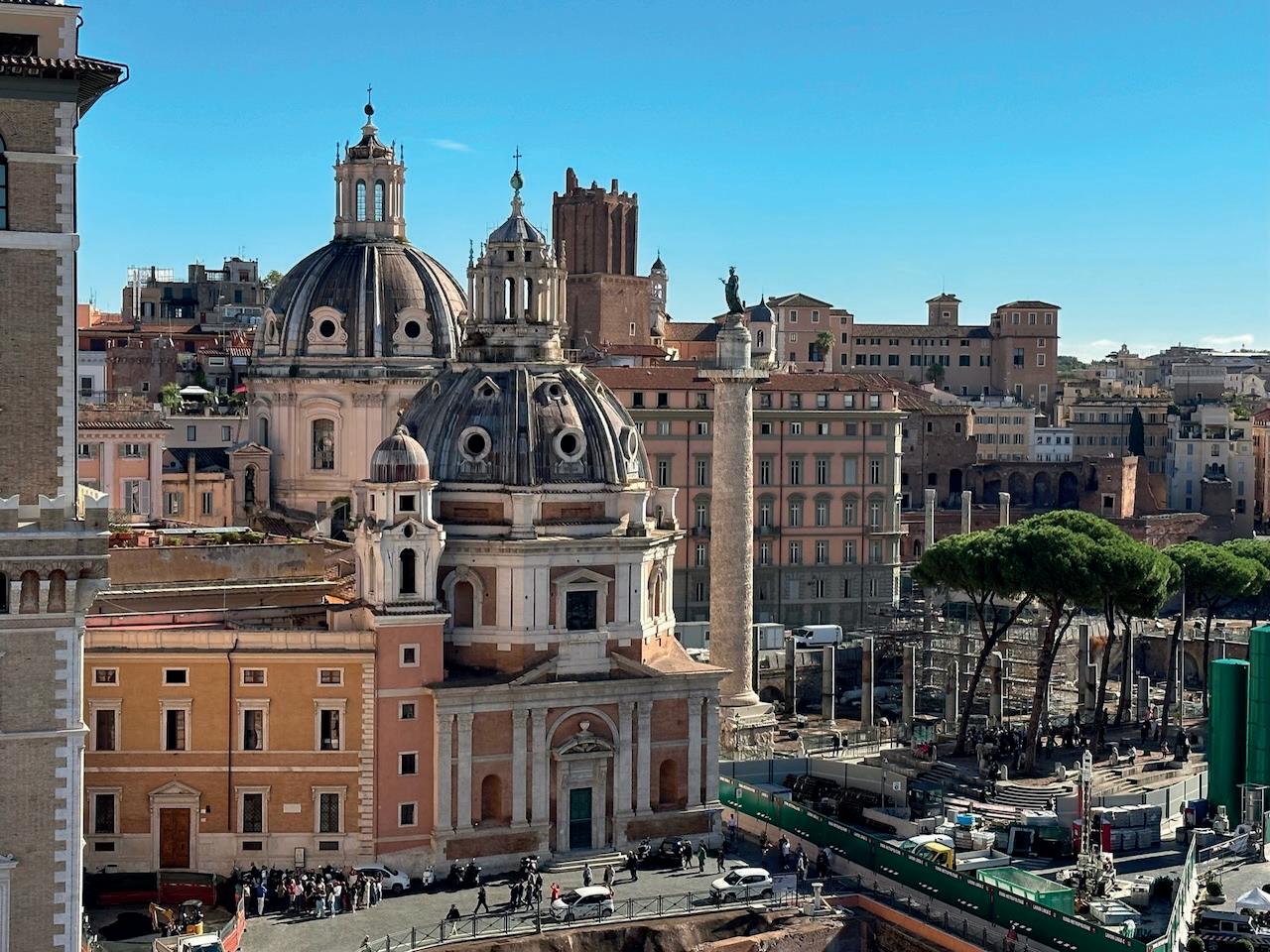
Seminars and courses take place at John Cabot University’s campuses in the centrally located Trastevere district of Rome and in nearby Roman museums, churches, palaces, monuments, archaeological parks, archives, rare book libraries, restoration labs, study collections, artists’ workshops, public installations, and
These venues of visual culture and documentation constitute the laboratory of the degree. Some courses also include instructional for example, Pompeii, Herculaneum, and Naples; Assisi and Perugia; Ravenna; Venice; Milan; the
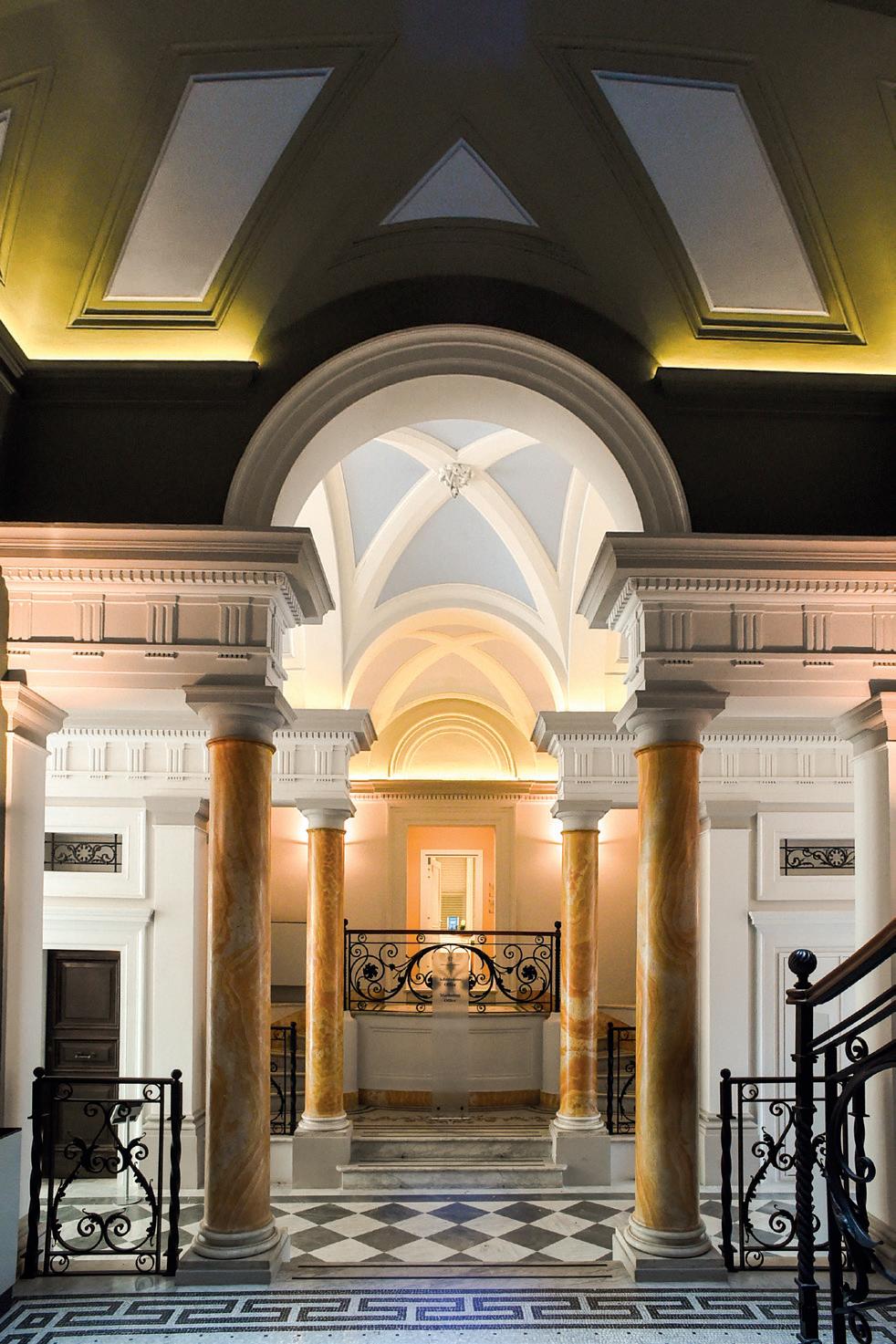
FACULTY
Seminars and courses for the MA are taught by professors from John Cabot University’s Department of Art History.
• Crispin Corrado, PhD, Brown University
• Laura Foster, PhD, Duke University
• Karen Georgi, PhD, Boston University
• Inge Lyse Hansen, PhD, University of Edinburgh
• Tom Henry, PhD, Courtauld Institute of Art, University of London
• Jens Koehler, PhD, University of Munich
• Cornelia Lauf, PhD, Columbia University
• Sarah Linford, PhD, Princeton University; Doctorate (research), Université Blaise Pascal
• Sharon Salvadori, PhD, Institute of Fine Arts, New York University
• Lila Elizabeth Yawn, PhD, University of North Carolina at Chapel Hill
Faculty teaching and research specializations span the chronological range from classical antiquity to the present, concentrating on subjects as diverse as ancient Roman portraiture, mural painting, and engineering; Early Christian sarcophagi, catacomb decoration, and mosaics; medieval architecture and urban space; illuminated manuscripts and codicology, Renaissance painting; Baroque architecture and Rome in the 1700s; nineteenth-century American art criticism; twentieth-century Italian art; museum studies; art crime; and contemporary cultures of art in Italy and the US.
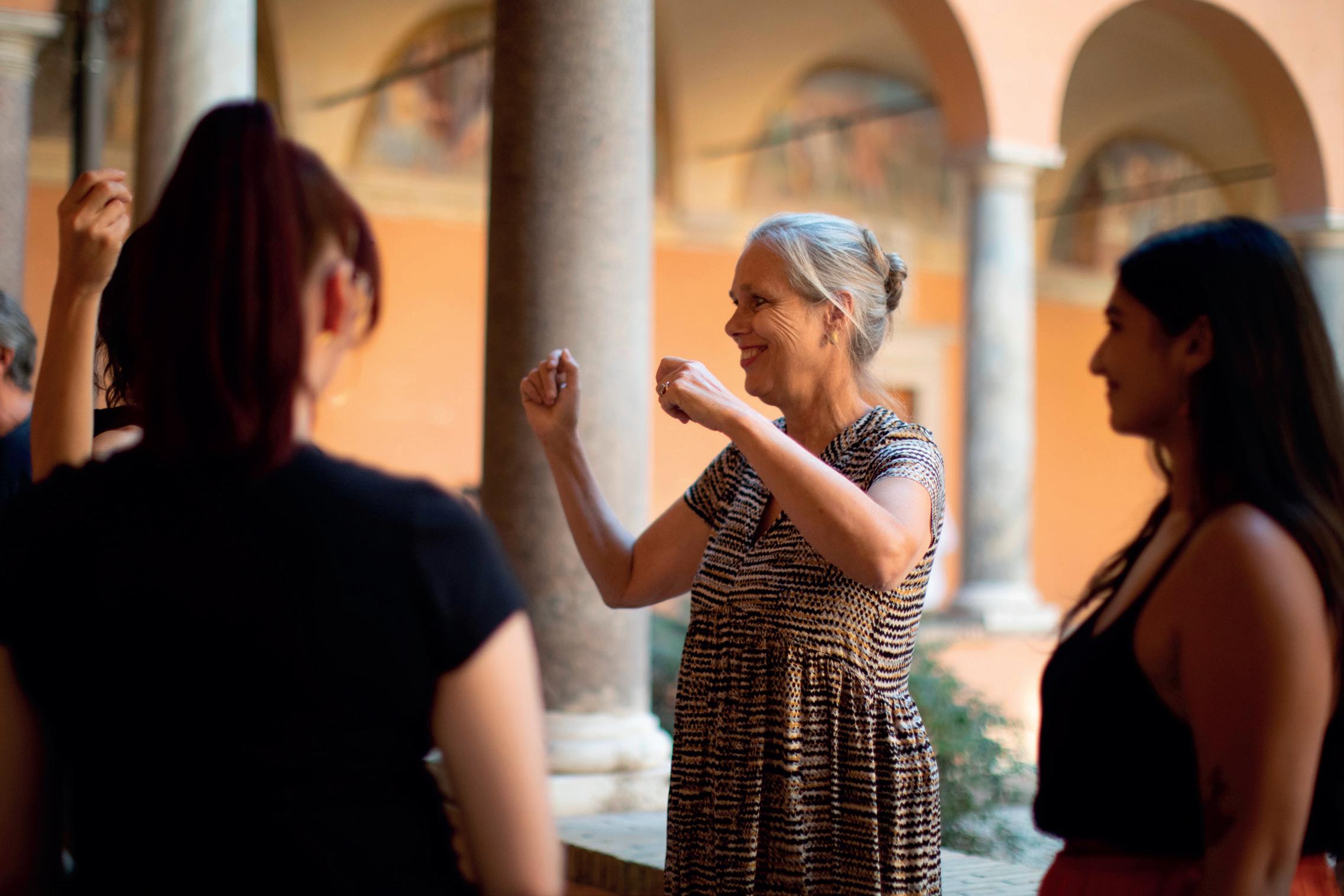
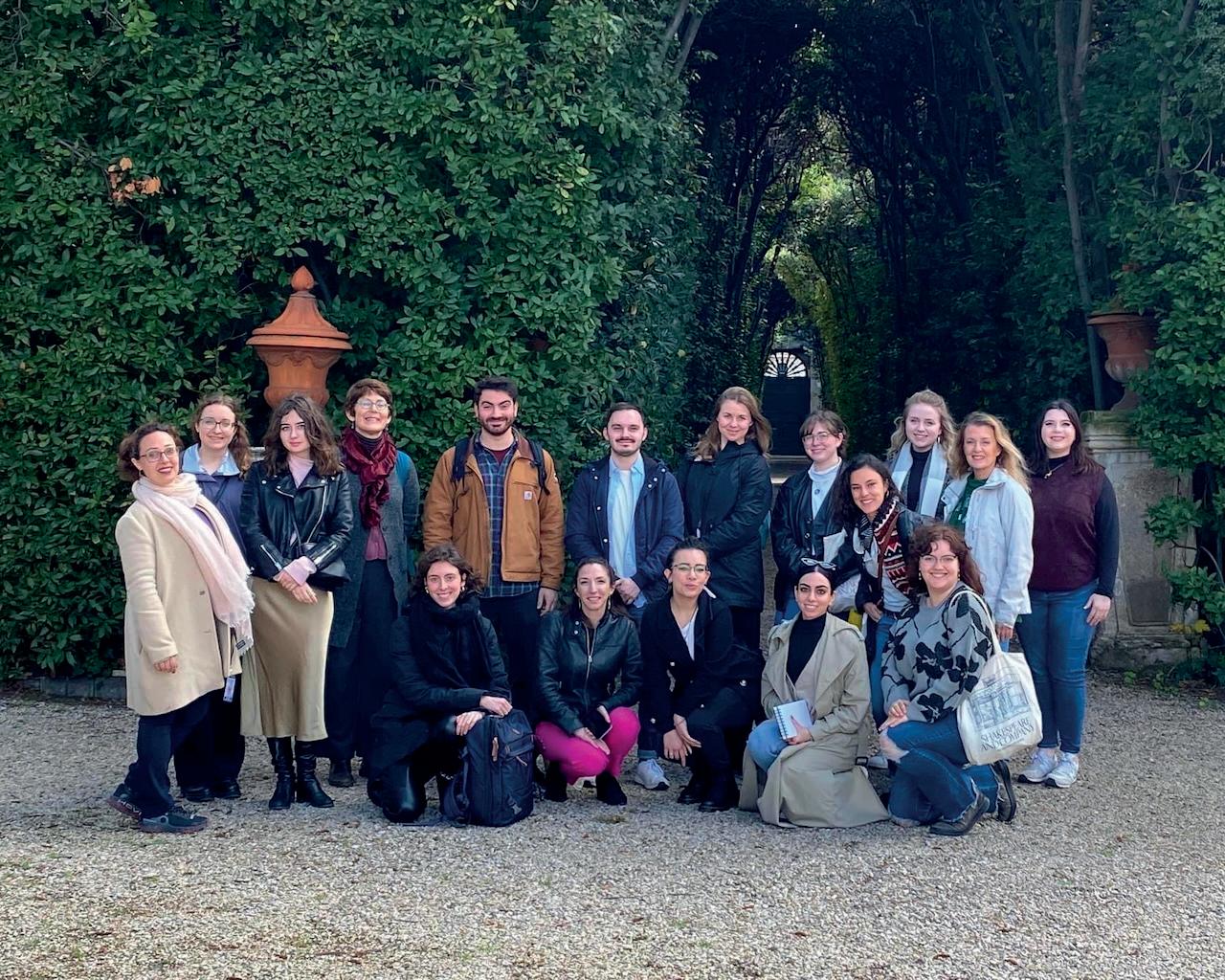
DEGREE PROGRAM
The MA unfolds in three phases: a Foundation Phase of research seminars and coursework; a Master’s Exam and attainment of MA Candidacy ; and a culminating phase of MA thesis-writing and professional experience (internships).
Students may choose from two different timetables for completing the degree. The intensive format unfolds over approximately fifteen months of full-time study, beginning in the Fall semester and concluding at the end of the following Fall. With the biennial format, the degree requirements are distributed over two full academic years, with the option to do internships in both Fall and Spring.
PHILOSOPHY AND METHOD
Inverting conventional practice, John Cabot University’s MA curriculum begins by scrutinizing material objects and built environments in person, rather than through photographs. With this point of departure, it cultivates visual-contextual analysis and skills for researching art and its history directly from the primary record while stimulating alternative perspectives on deeply rooted disciplinary habits.
The atmosphere is collegial and collaborative. Students work closely with their professors and peers to become strong, independent researchers, skilled at devising intelligent guiding questions and at seeking answers through deep, responsible exploration of existing scholarship.
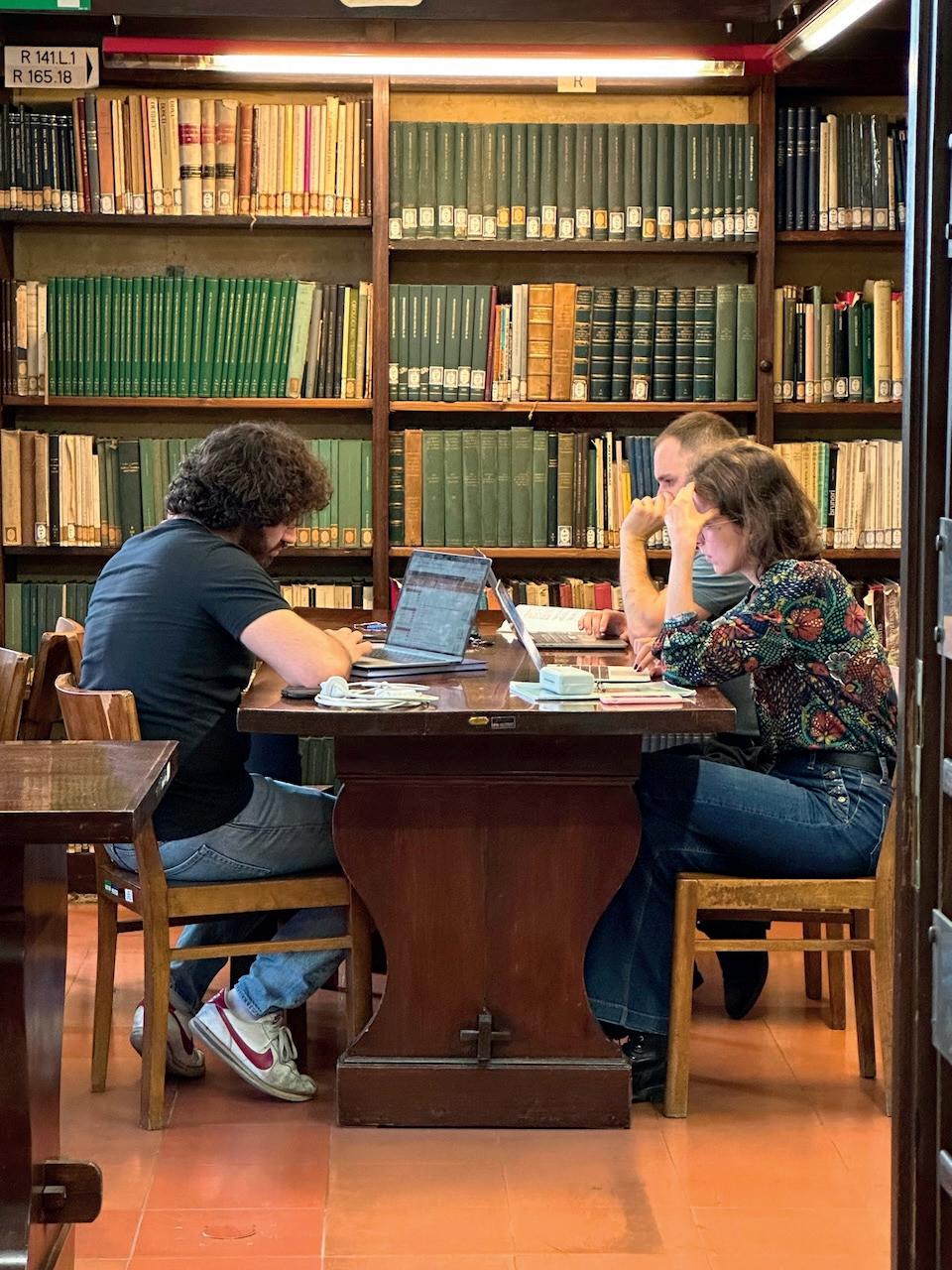

FOUNDATION PHASE
During the Foundation Phase (the first year of full-time study), students complete twenty-four credit hours of graduate-level course work, consisting of:
• Six courses (eighteen credit hours) in the history of art and architecture, including at least three research seminars and one course or seminar in each of four chronological categories: ancient, late antique or medieval, early modern, and modern or contemporary.
• Two methodology courses (six credit hours): Case Studies in Art-Historical Practice; and the Practicum in Art-Historical Research and Problem Solving.
The Foundation Phase also includes two independent components: Cultural Events Reviews, in which students attend and review external scholarly lectures, conferences, and special exhibitions; and the Language Requirement, in which they demonstrate the ability to read and understand scholarly writing in Italian, French, or German, as required for advanced art-historical research.

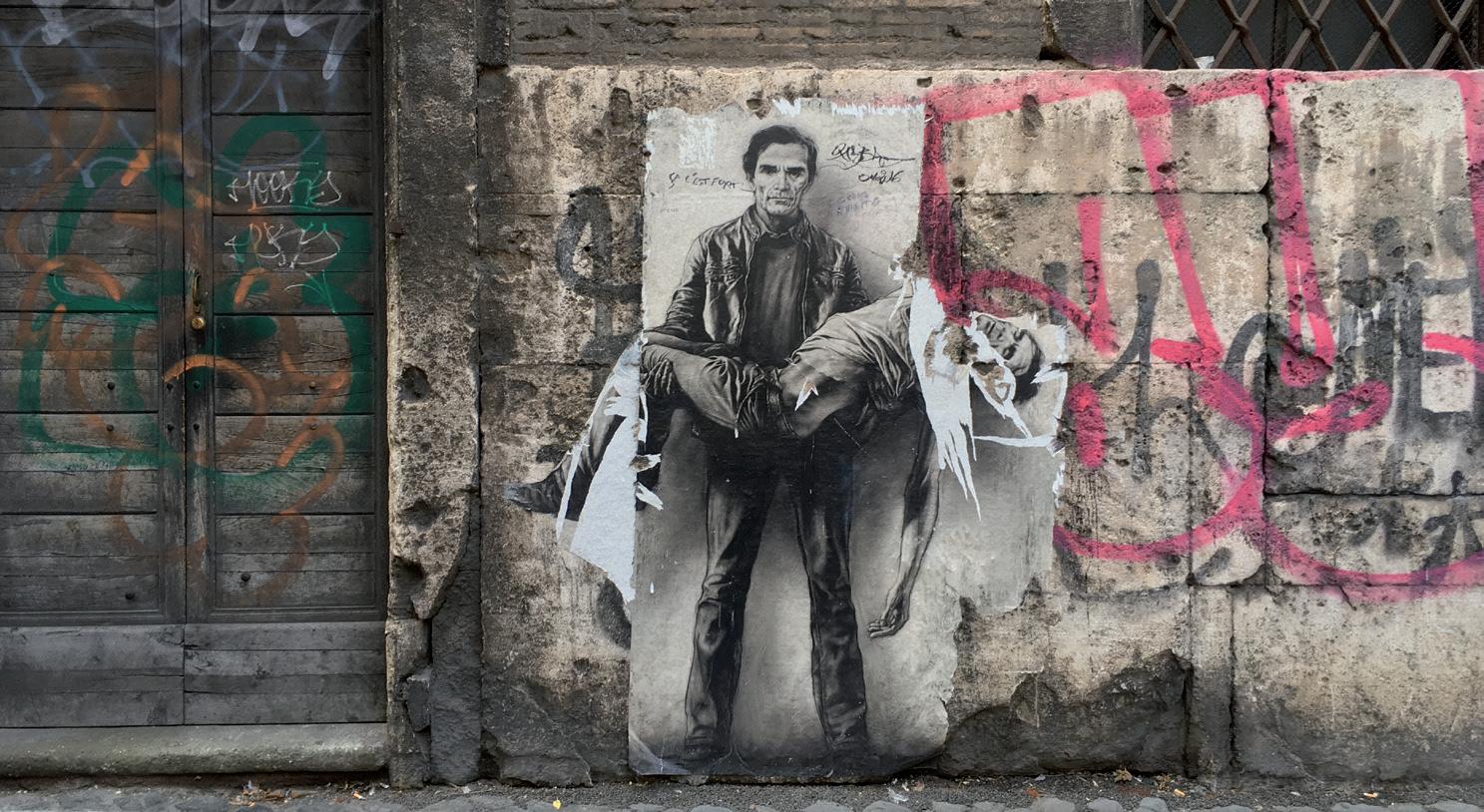
A point of passage to MA Candidacy and thesis writing, the exam tests students in identifying, researching and analyzing material objects and built environments, with emphasis on the art of Rome and related cultures across time. The exam is administered in May. The remainder of the summer can be devoted to coursework, thesis research, research-related travel, internships, supplementary language training, or other professional or educational activities. Full-time students may choose to take nine, rather than twelve, credit hours, in the fall and/or spring semester of the first year and complete their Foundation coursework during the summer session.
THESIS AND PROFESSIONAL EXPERIENCE
The degree culminates in the writing of a Master's thesis (six credit hours), building on a research project initiated during the Foundation Phase in the context of a research seminar or other course. The thesis may be completed in the fall semester, following a summer of independent research, or over the course of the second fall and spring semesters of enrollment. The Thesis Colloquium (three credit hours) accompanies and structures the thesis-writing experience through research and writing workshops, special library visits, peer-review sessions, and practice presentations, culminating in the public delivery of the thesis in the form of a conference paper.
During the period of thesis writing, MA candidates also complete the Professional Experience requirement (three credit hours) by working as teaching or research interns at John Cabot University or through internships at museums, research institutes, libraries, galleries, publishing houses, or art foundations in Rome and sometimes in other locations in Italy. Students who choose the two-year degree-completion format may opt to pursue a second internship for credit (three credit hours) at no extra cost.


pietà of Pier Paolo Pasolini by Ernest Pignon-Ernest

FIFTEEN-MONTH FORMAT
Fall Semester
∙Methods (3 credit hours)
∙Three Art History Courses (including at least one research seminar)
∙Cultural Events Reviews
∙Language Exam (may also be taken in the Spring)
Spring Semester
∙Methods (3 credit hours)
∙Three Art History Courses (including at least two research seminars)
∙Cultural Events Reviews
∙Language Exam (if not taken in the Fall)
MA Exam (late May)
Summer Term
∙Independent Thesis Research
Fall Semester
∙MA Thesis Registration (6 credit hours)
∙MA Thesis Colloquium (3 credit hours)
∙Professional Experience (3 credit hours)
TWO-YEAR FORMAT
Fall Semester
∙Methods (3 credit hours)
∙Two Art History Courses - including at least one research seminar (6 credit hours total)
∙Cultural Events Reviews
∙Language Exam (may also be taken in the Spring)

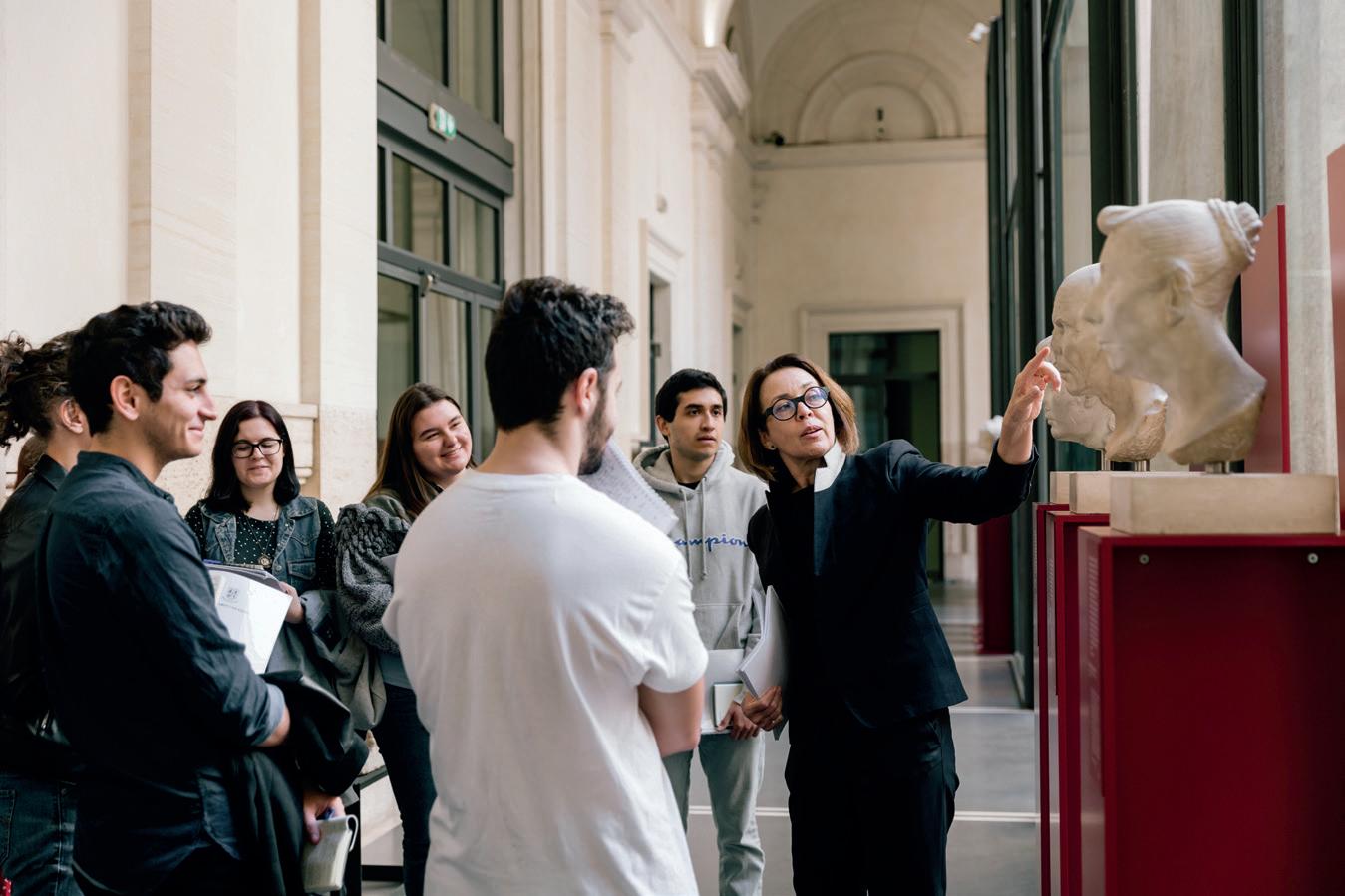
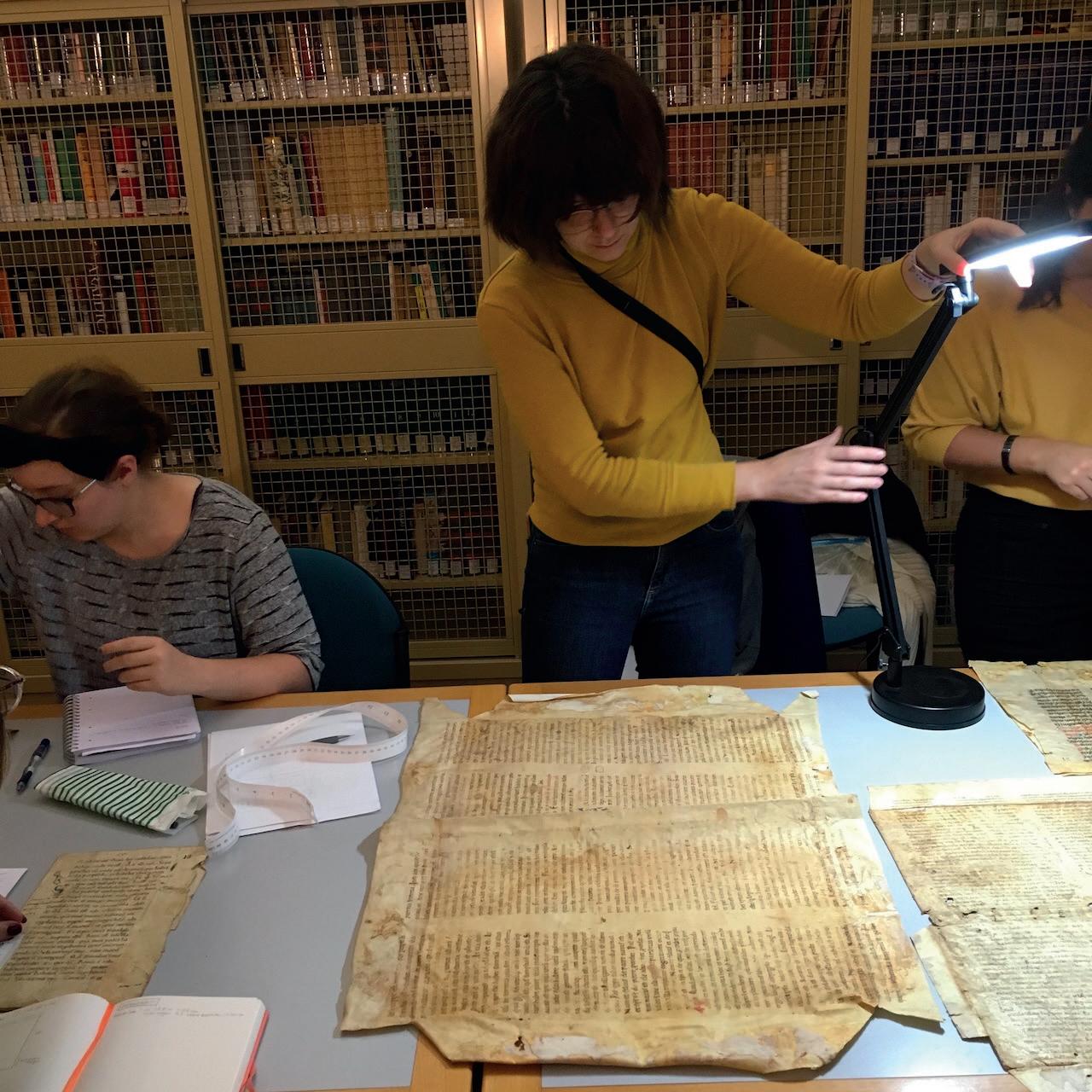
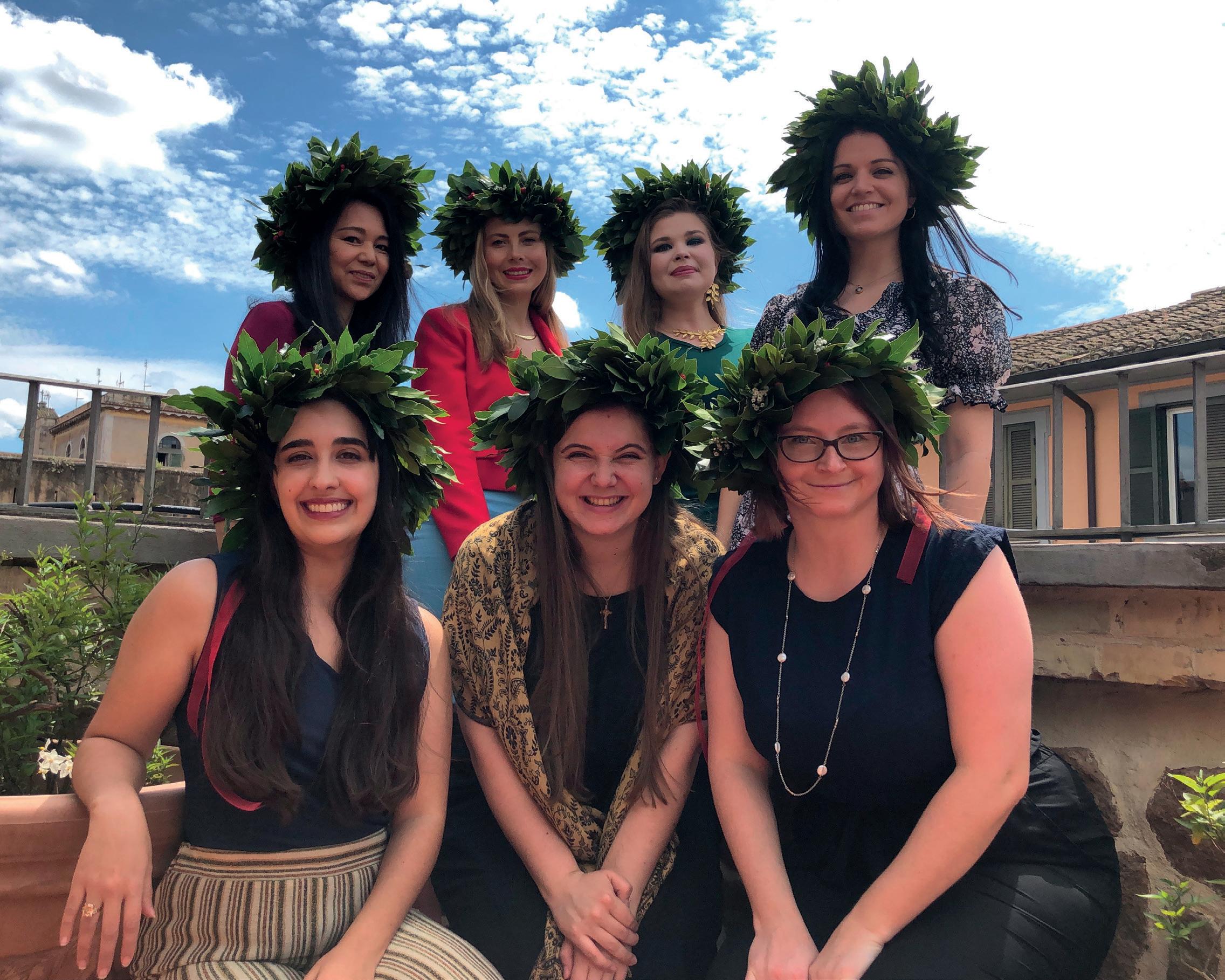
The degree is designed to serve as a foundation for art-historical careers —for instance, in museums, galleries, schools, art consultancies, and art-publishing houses— and as preparation for PhD-level study at other institutions. The MA curriculum is also conceived as career enhancement for current and future professionals in areas in which primary research skills and expertise in the history of Italian visual culture offer creative advantages and possibilities for specialization. Examples include cultural heritage management, library and information science, historical fiction and script writing, scenography, culinary arts, art conservation, documentary filmmaking, and game design.
Graduates of John Cabot University’s MA in Art History have been admitted to PhD programs at distinguished institutions, including the University of Chicago, the Central European University (Vienna), the Scuola IMT Alti Studi Lucca, and the Universidade Católica Portuguesa. Other graduates have gone on directly after completing their MAs to jobs in curating, community college teaching, studio and gallery management, cultural tourism, public history, and the administration of university programs abroad.
Students who complete the program
JOIN THE JCU Alumni Network
• Ongoing access to Career Services
• Participate in JCU Career Fairs and networking events
• Opportunity to share academic and professional experience in lectures and conferences
• Learn about academic and professional opportunities in art history and cultural industries

CENTER FOR CAREER SERVICES
The JCU Center for Career Services is dedicated to helping students and alumni develop successful careers by facilitating professional networking and development. The center offers internship and job opportunities to students and alumni.
THE CENTER PROVIDES:
• Access to a network of 770+ partner organizations
• Three Career Fairs a year
• Resume and cover letter revision
• Career-orientation webinars
• Personal branding and LinkedIn profile •
For information:
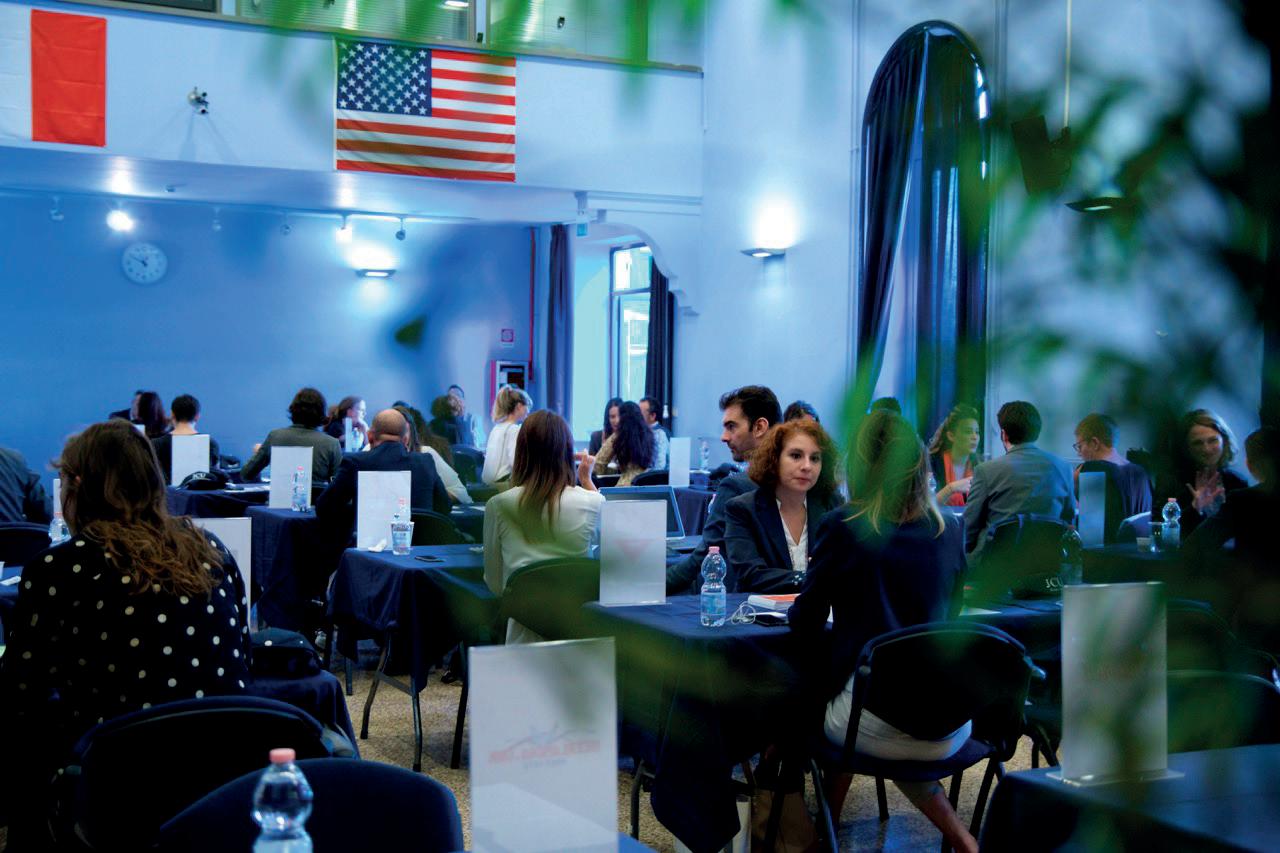
INTERNSHIP TESTIMONIALS FROM STUDENTS
LINDSAY MALDARI
With the help of the Center for Career Services I secured an internship with the Istituto Amedeo Modigliani (IAM). The IAM is a non-profit organization whose goal is to disseminate knowledge of and appreciation for the 20th century Italian modern artist Amedeo Modigliani. As an International Exhibition Intern, my duties primarily centered around scouting museums and cultural institutions across Europe to stage an experiential exhibition of Modigliani’s portraits.
Having the opportunity to work in an Italian-language environment while also conducting English-language outreach with other European institutions enabled me to grow my confidence and capabilities in Italian while also augmenting my skillset in exhibition communications with a wide variety of museums and galleries. I would recommend this internship to multilingual candidates looking to grow their experience in cultural communications and who wish to garner insight into much of the behind-the-scenes work and planning that leads up to the staging and curation of exhibitions.
MADELINE STERNS
During my MA, I enrolled in two professional internships: a Teaching Internship at JCU and an external Administrative Assistant role at the Museo delle Civiltà in Rome. As a TI for Introduction to Art-Historical Thinking, the greatest skill I gained was through one-to-one guidance from Prof. Inge Hansen on how to design a course syllabus. Her perspective on courses as roadmaps with skills and content goals in mind for students helped me solidify long-term meaning in education. While at the Museo delle Civiltà, I assisted in the website remodeling process and marketing research. Occasionally, I worked in the Anthropology Lab with the museum’s in-house researchers on Bronze Age human remains.
These working relationships and practical perspectives on art-historical museum work opened my eyes to career opportunities outside of academia. This program has absolutely set us up for success both as future academics and working professionals. A PhD doesn't seem as daunting as I once believed because this MA has done so much to immerse us into the process of investigative research.
CHASE PALLISER
My internship was at the Drugstore Museum, where I worked with archaeological findings from an ancient Roman site. The museum is unusual: an ancient Rome necropolis and contemporary art space in the basement of a modern building where there was once a 24-hour drugstore. As an intern, I was responsible for cleaning, preserving, and measuring ceramic finds from the excavations and documenting and recording all ceramic data from the site. I also planned events at the museum for an elementary school in Rome and for my colleagues at John Cabot while learning a great deal about museum education, including how to conduct tours for young school groups and universities.
During the internship, I worked closely with Prof. Cornelia Lauf at John Cabot, who was very inspiring. A specialist in contemporary art, she has many connections in the fields of art and archaeology, which I have been able to benefit from. I recommend this program and internship to anyone interested in art history, archaeology, anthropology, and the study of Roman art.
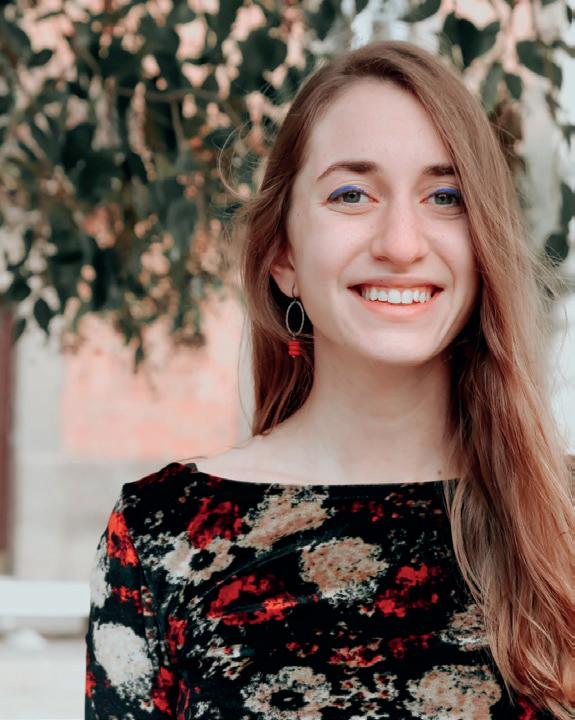
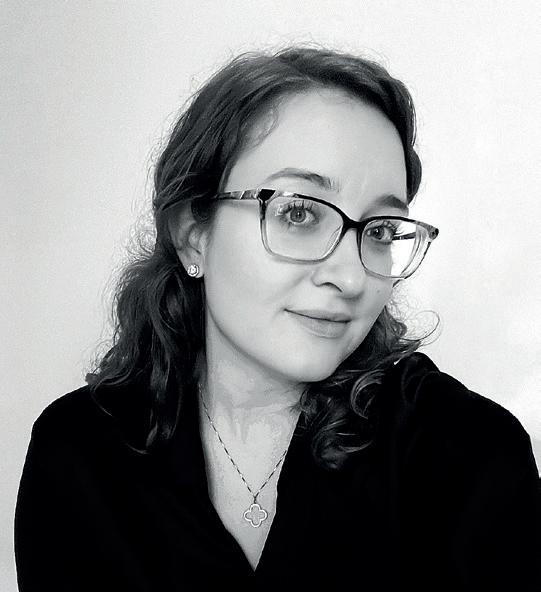
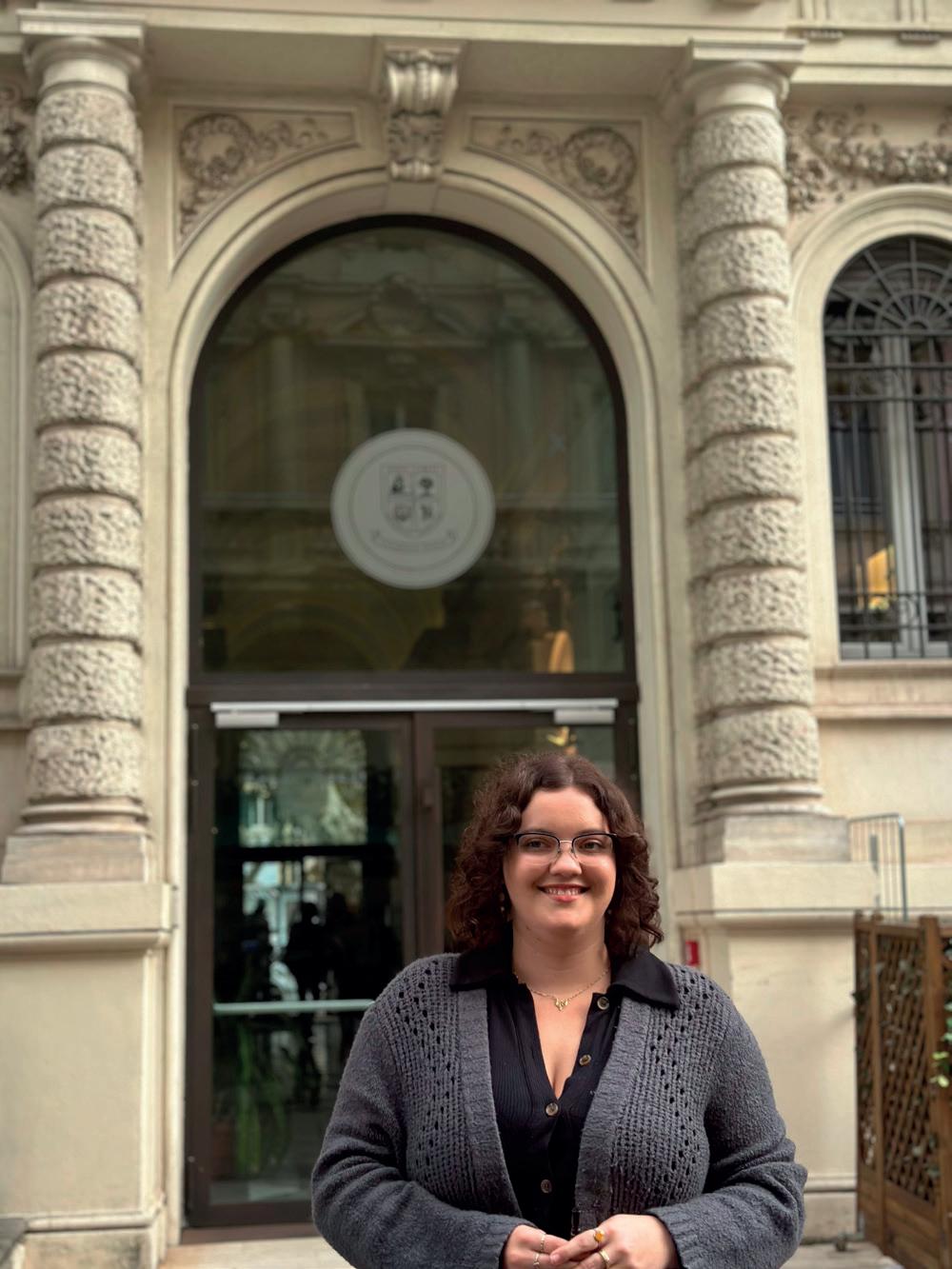
ADMISSIONS
Applications are welcome from holders of a Bachelor’s degree from an accredited university who have completed at least twelve semester credit hours in the history of art with a grade-point average of at least 3.0 (B) or the equivalent. Also highly recommended: at least six semester credit hours of Italian, French, or German.
APPLICATION CHECKLIST
• Completed Application Form
• A 600-word personal statement
• $/€ 50 application fee
• CV/Resume
• Official transcripts of all post-secondary (undergraduate and graduate) studies undertaken to date
• Proof of completion of a Bachelor's degree or the equivalent if not attested in the official transcripts
• A writing sample in English
• Three letters of recommendation
• GRE scores - optional but recommended for applicants wishing to be considered for funding
• Evidence of English proficiency equivalent to a C1
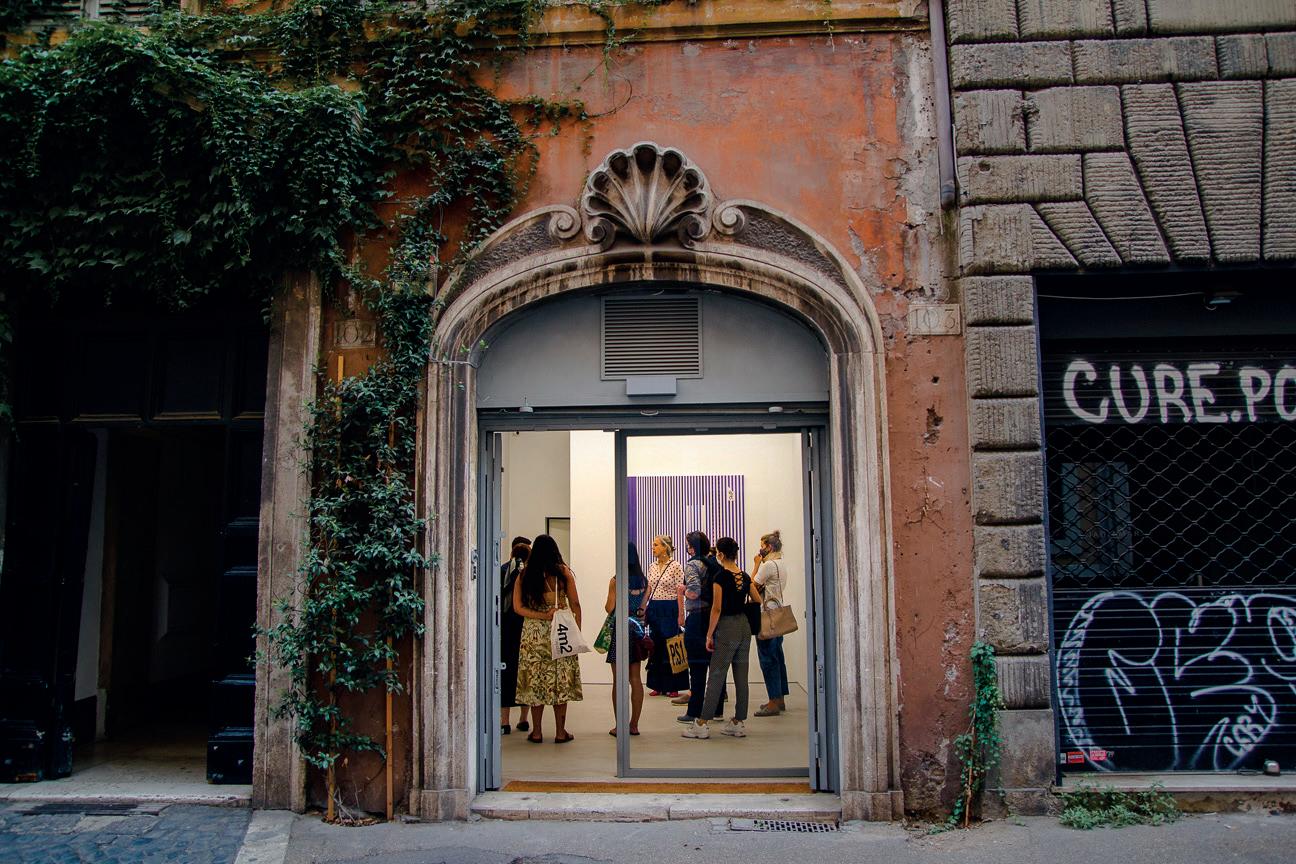
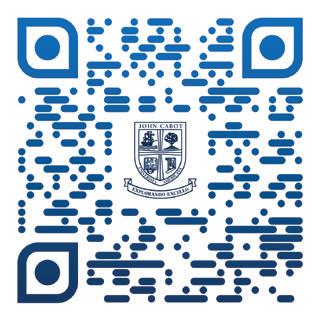
TUITION
Tuition and fees for the full MA program in the 2024-2025 academic year will be:
• USD 22,000 for US citizens or permanent residents, or Canadian citizens
• EUR 20,000 for citizens of countries other than the US or Canada
FINANCIAL AID
Outstanding applicants will be considered for the following forms of financial assistance:
• Full Presidential Graduate Tuition Grants (1-2 merit-based awards per year)
• Partial Graduate Tuition Grants
John Cabot University is authorized by the US Department of Education to administer Federal Direct Loans to US citizens and permanent residents enrolled as graduate students.
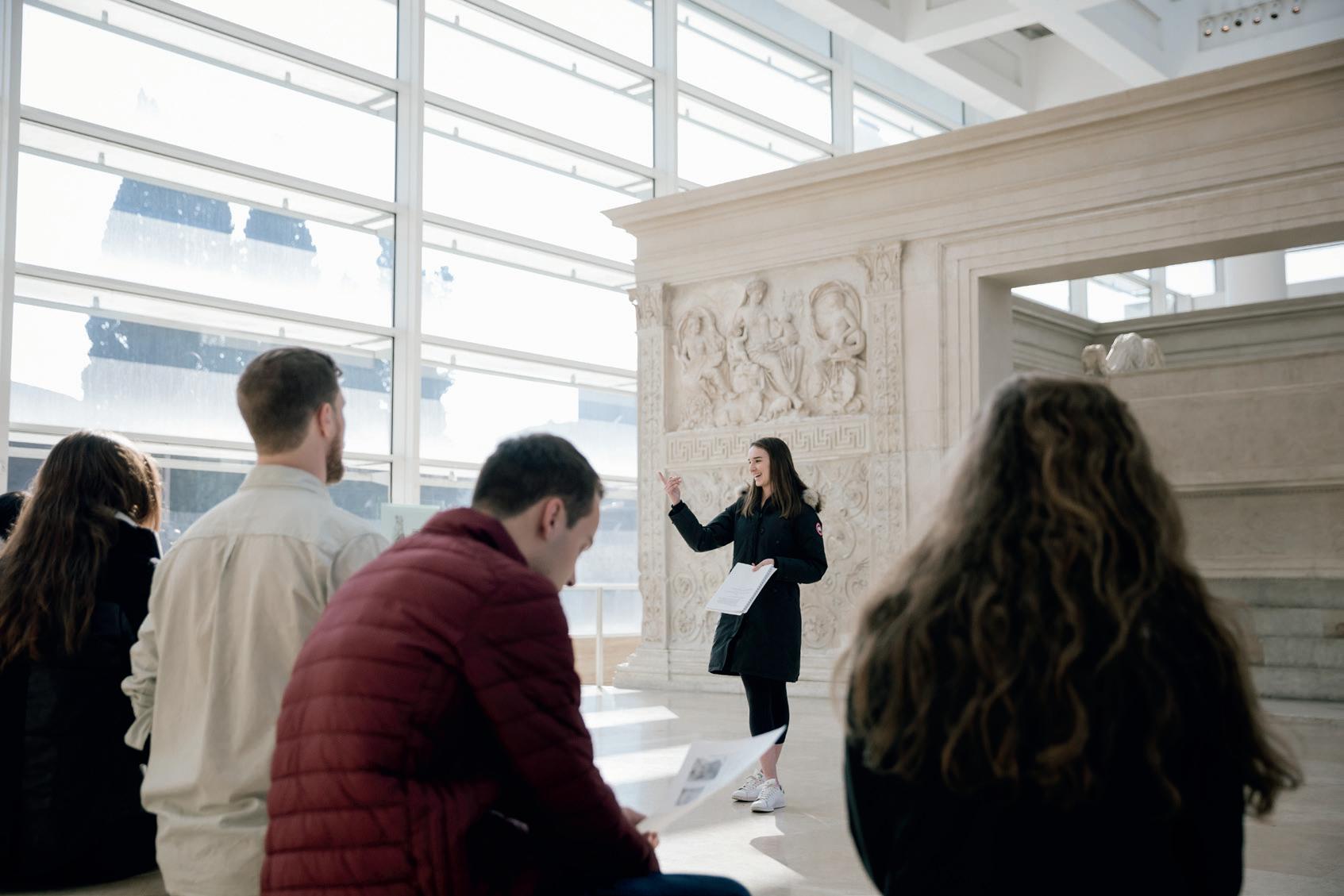

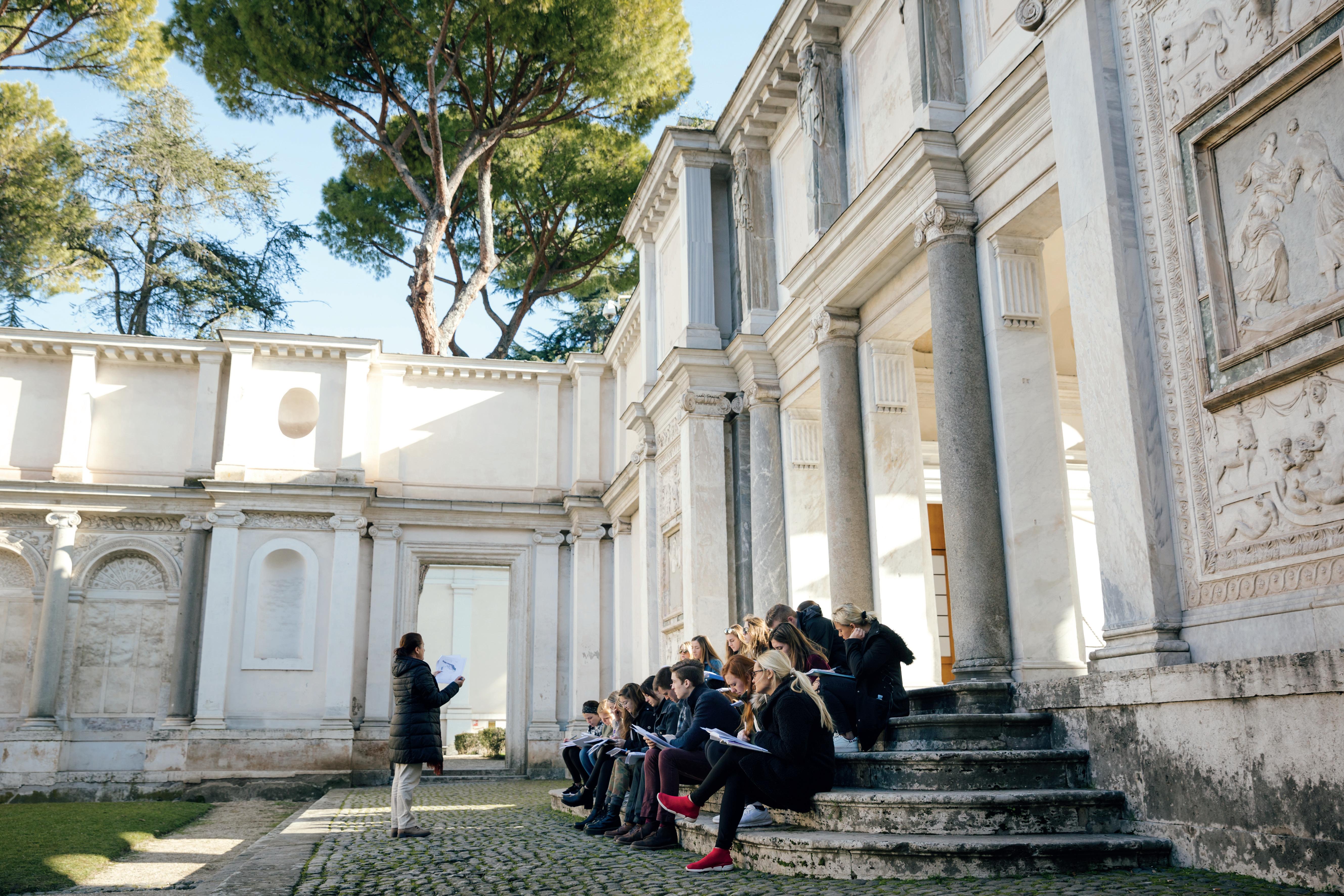

www.johncabot.edu/arthistoryma graduatestudies@johncabot.edu
Rome Campus
Piazza G. Gioachino Belli, 11 00153 Rome, Italy
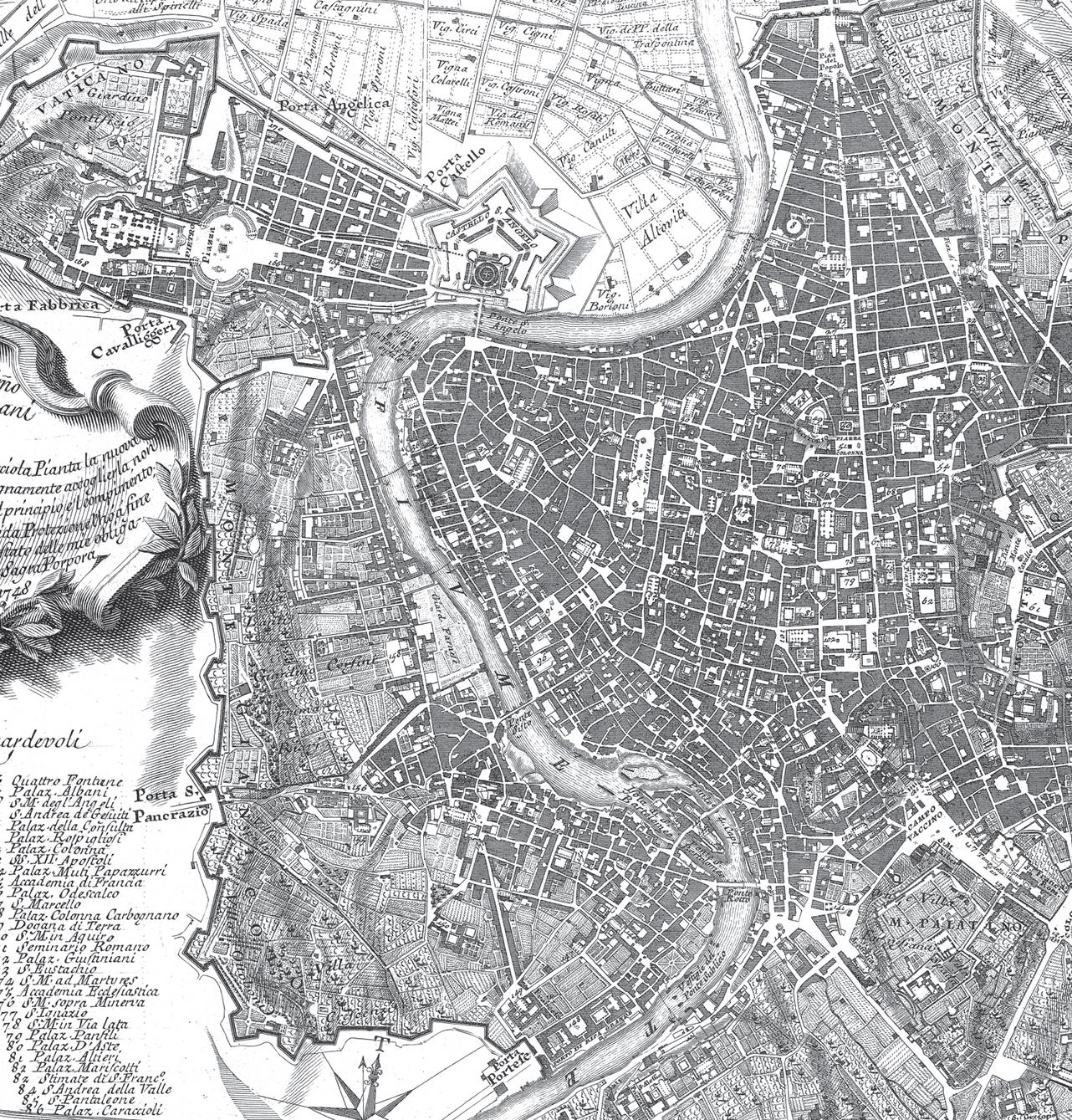
FOLLOW US: @johncabotuniversity

G.B. Nolli and G.B. Piranesi, La Topografia di Roma di Gio. Battista Nolli, dalla maggiore in questa minor tavola dal medesimo ridotta, etching, 1748
